This is dough enriched with butter, honey, and milk, which makes it soft and easy to work with. Even if you’re not super-skilled at sourdough loaves (yet), this recipe will result in an amazing pan bread. Enjoy!
Recipe inspired by the great Maurizio from The Perfect Loaf.
Pain de Mie: Sourdough Sandwich Bread
- Autolyse: 1 hour, Bulk: 5 hours, Proof: 2-3 hours
- 1 loaf @801g
- Difficulty: Easy
- Ingredients
- 387g white flour
- 92g whole mik, cold
- 170g water
- 9g salt
- 64g active, mature sourdough starter @100% hydration
- 29g honey
- 50g butter, soft
- Instructions
- Autolyse for 1 hour, leave 10g of water for later.
- Mix in the rest of the ingredients. First starter, 10g of water, salt. Then honey. Then soft butter.
- Bulk fermentation. Do 3 stretch-and-folds at the beginning, 30 minutes apart. Then leave it alone. Around 5 hours in total.
- Preshape into a round and let rest for 30 minutes.
- Shape into a pan loaf.
- Proof for 2-3 hours.
- Bake or retard overnight.
The process for this sourdough pain de mie is very beginner-friendly. It can be challenging, though, to mix in the honey and butter thoroughly. Hand-mixing is possible, but may become a bit of a workout. So, feel free to use a mixer!
1. Autolyse
Mix together white flour, whole milk and 160g of water until there are no more dry bits of flour. Cover and let rest for 1 hour.
2. Mix
First, add the starter, 10g of water and the salt. Mix until homogenous.
Then add the honey and mix.
Now mix in the butter. The butter should be cool to the touch, but not cold. Too cold and you’ll have trouble mixing it in; too warm and the dough will get greasy. If your butter is too warm, put it in the freezer for a while. If it’s too cold, leave it in a warm spot.
3. Bulk fermentation
Do 3 sets of stretch-and-folds at the beginning of bulk, 30 minutes apart. Leave the dough alone for the rest of bulk.
As always, the duration of bulk depends on the temperature and the strength of your starter. For me, this dough needs quite a long bulk.
5 hours or more.
4. Preshape
Turn the dough out onto your work surface. Preshape it into a round. Let it rest until it has relaxed a bit (30 minutes or so).
5. Shape
Shape the dough into a pan loaf. This is something between a batard and a baguette. Place the loaf into a pan.
6. Final proof
The loaf should grow considerably in size. Don’t worry too much about overproofing. It won’t hurt like it would hurt a freestanding loaf.
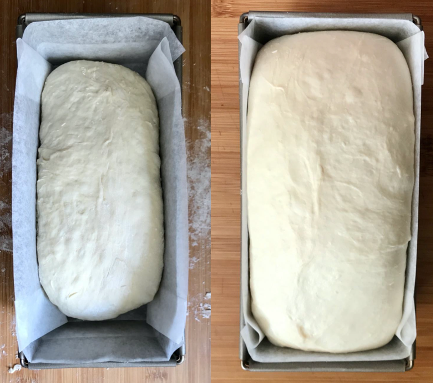
7. Bake or retard.
Place a rack in the middle of your oven and preheat to 420F/220C.
If you use a baking pan without a lid, you can put a mix of 1 egg yolk & 1 tablespoon milk on the top of the loaf to prevent burning the top.
Bake for 35 minutes, then reduce to 375C/190C and bake for another 10-15 minutes.
I’ve retarded this loaf overnight before baking. It didn’t do any good or harm, so it’s more of a timing convenience thing.
Enjoy your pain de mie!
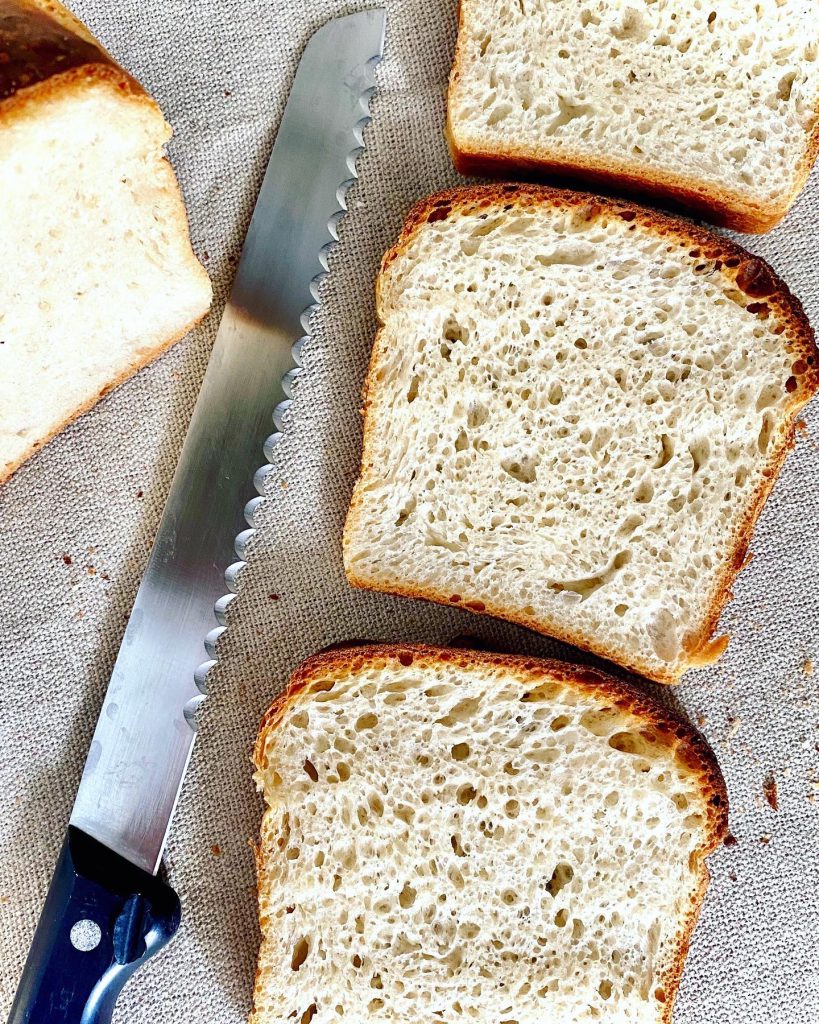
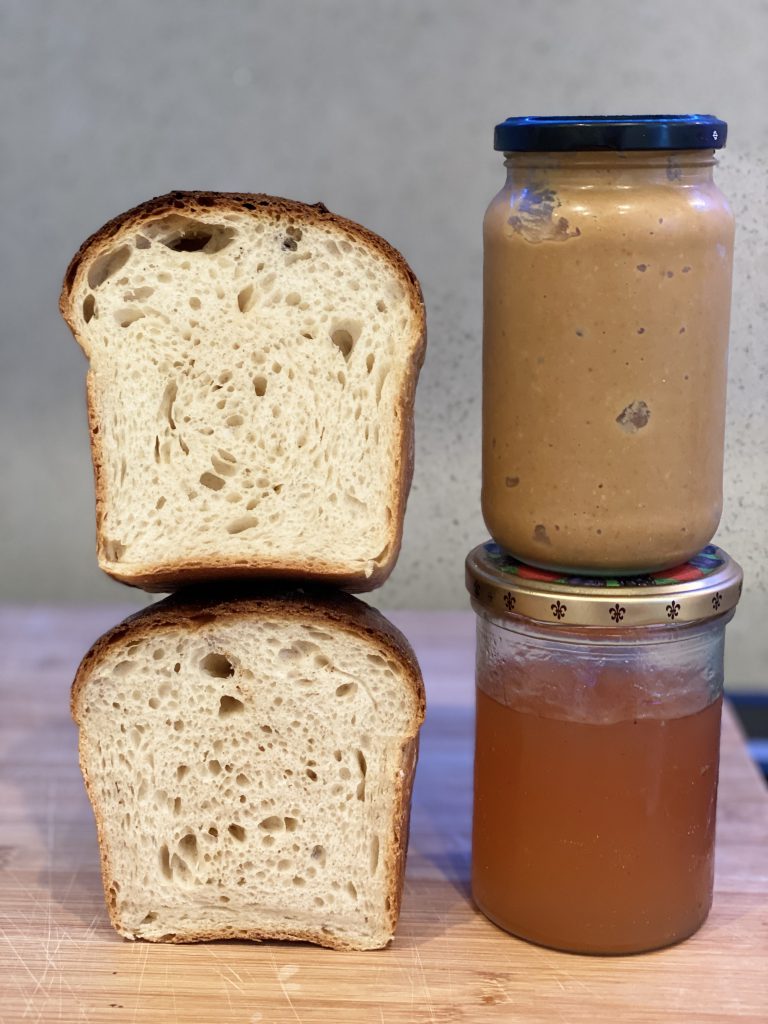
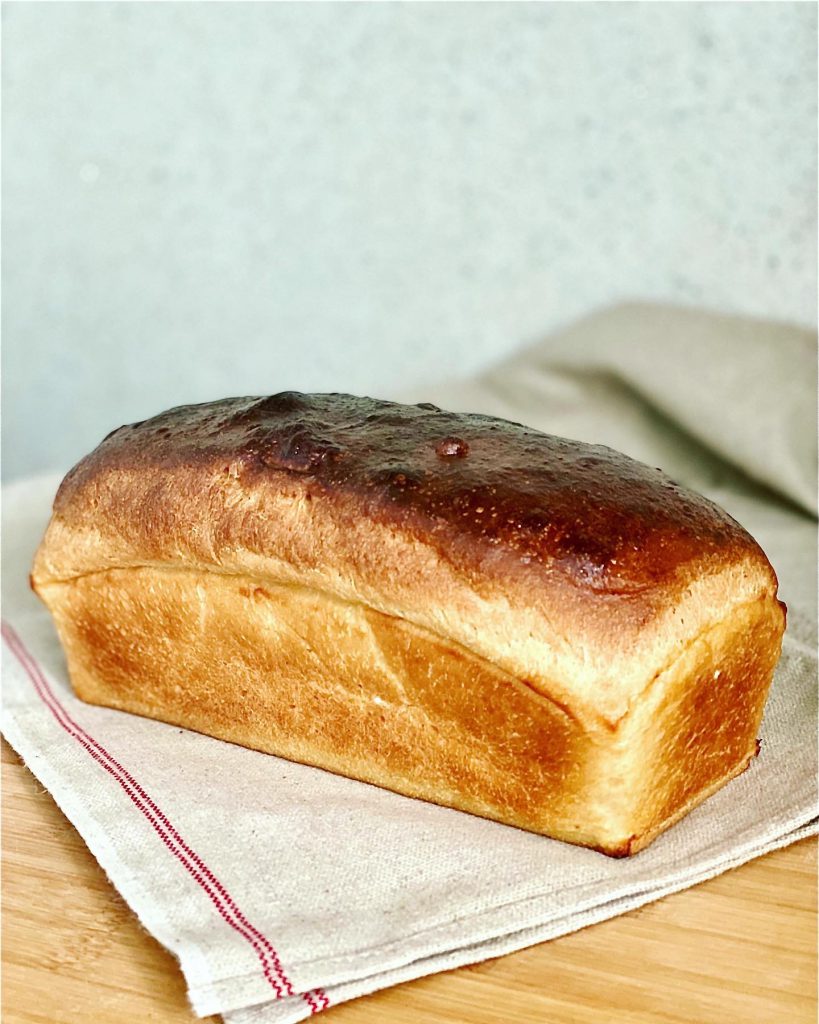
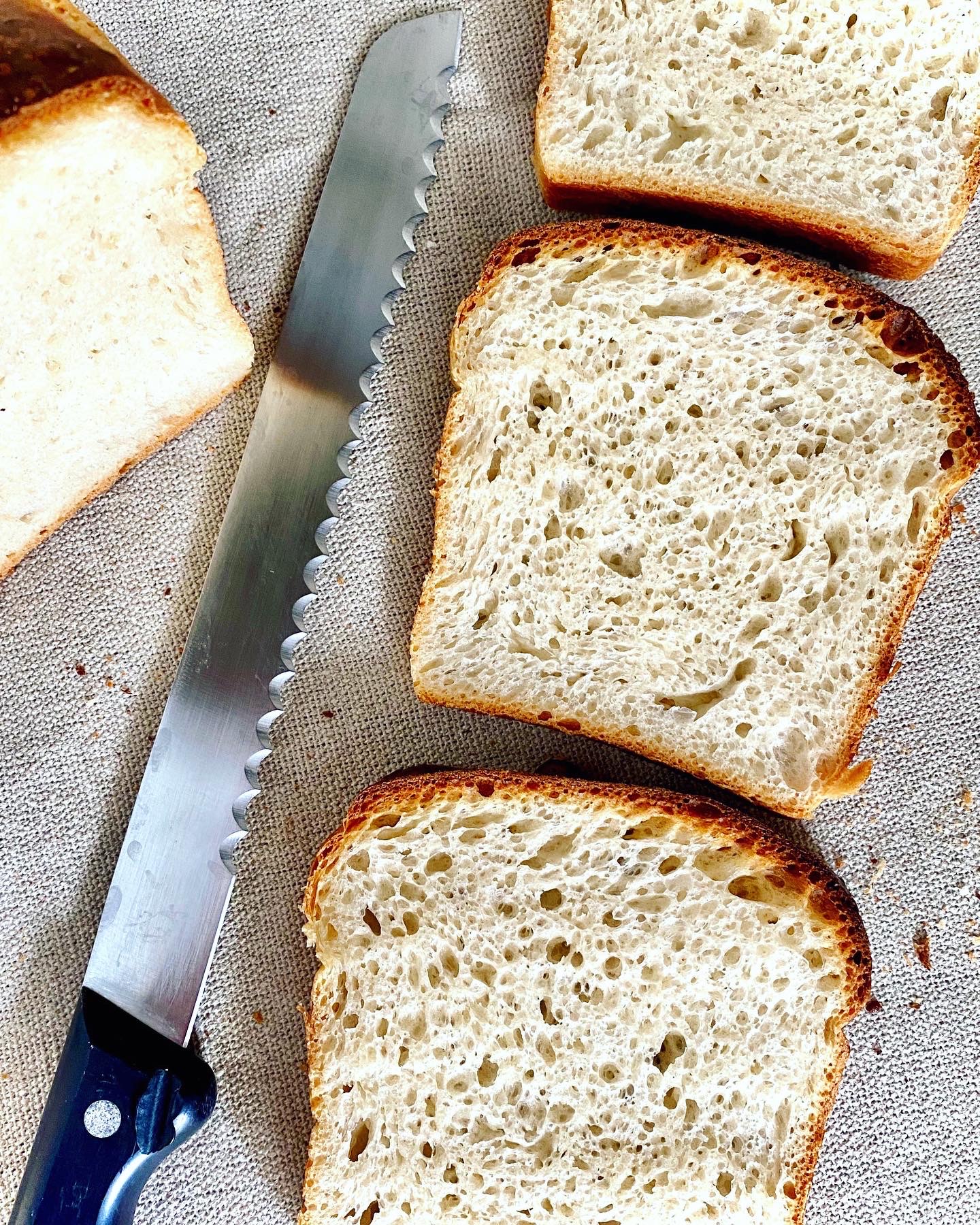


This looks so good! Tried to make it, but didn’t turn out for me at all. I think because the instructions don’t say when to add the 92g of milk, so I added it in step 2 “mix in the rest of the ingredients.” Might try again if the recipe is corrected later.
Dear Kelly,
shoot! You’re absolutely right, there was a typo. You’re supposed to add the milk in Step 1, and the starter in Step 2. I’ve corrected it now!
So sorry you wasted your effort on this – I hope you give the recipe another shot, it’s one of the softest, most delicious breads I’ve ever made.
Let me know how it goes!
Nicola
Hi! I want to make this but was wondering if I can bake it in a 9×5 loaf pan or do I need a Pullman? Thank you.
Hi Ann!
You don’t need a Pullman, I don’t own one myself 🙂
My loaf pan is roughly the same size as yours, so you should be good to go without needing to change the amounts of the ingredients.
Let me know how it goes!
Happy baking
Nicola
Hi! This looks amazing. I’ve just begun with sourdough, so what does 100% hydration of the sourdough mean please?
Hi Jay! 100% hydration means same amount (in grams) of water and flour. 70% hydration, for example, would mean 70g water for every 100g flour. Hope that helps!